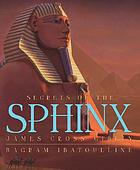By Lois Lowry
New York: Laurel Leaf, 1989
In Number the Stars, a young Danish girl named Annemarie Johansen and her family have to protect her best friend, Ellen's, family from the Nazi occupation. On the eve of the Jewish New Year in 1943, Ellen has to pretend to be part of the Johansen family so that the Nazis, who have been coming through to relocate all Jewish inhabitants of Copenhagen, will not find her. In a dangerous journey that takes the whole family to the banks of neutral Sweden, Annemarie will have to be braver than she thought she could ever be if she wants her best friend to be safe.
In Lowry's afterword, she explains how much of the story is true and how much is fiction. A surprising amount is actually true, which just proves that sometimes, fact can be even more amazing than fiction. For instance, the handkerchief that mutes the search dogs' sense of smell in the book was an actual invention, made from a mix of rabbit's blood and cocaine that, soaked on a handkerchief, would simultaneously attract the dogs' attention and then render their noses useless. The Resistance, the group to which Annemarie's family belongs, was a very real presence in Denmark, and the majority of the members were young, just like Lise and Peter. By researching and using these small but important details, Lowry gives her work an added layer of reality into which the reader can place herself.
This is a great story because it relates the fear and cruelty of the Nazi occupation during World War II without the gruesome setting of the concentration camp. A great work to introduce the topic to students, I think Number the Stars would inspire some great conversation within the classroom. Lois Lowry does not disappoint, and this work, a winner of the Newbery Award, is no exception.







